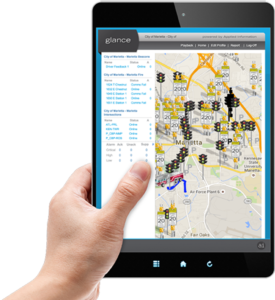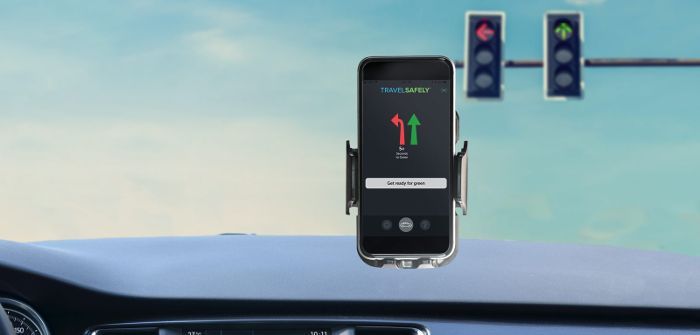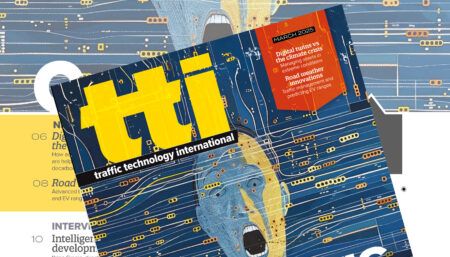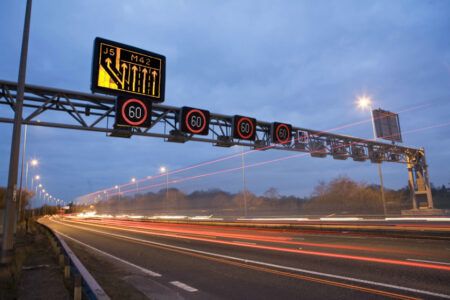One of the USA’s leading developers of intelligent transportation systems (ITS) and Internet of Things (IoT) mobility technology, Applied Information Inc. (AI), has announced plans to deploy Cellular Vehicle-to-Everything (C-V2X) connected traffic infrastructure products in the USA.
As a global solution for connecting vehicles to each other and their surroundings, C-V2X is designed to improve automotive safety, traffic efficiency, and automated driving with its low-latency communications, without the involvement of a cellular network or network subscription. Featuring the 9150 C-V2X Platform from Qualcomm Technologies Inc., AI’s Glance Smart Cities IoT roadside unit (RSU) portfolio of products are designed specifically to support traffic signals, school zone safety beacons, and a variety of other roadside infrastructure deployments in the USA. The technology also enables emergency vehicles to get green lights in the direction of travel while safely bringing all other traffic to a halt, as well as alerting drivers to road conditions and other hazards, even when there is no visibility.
The 9150 C-V2X platform features direct communication range and reliability and reduced latency in the face of congested roadways. With a strong evolution path in 3GPP to 5G New Radio (5G NR), C-V2X will offer the performance and support connected vehicles need to communicate with transportation infrastructure, leading to less congestion, reduced emissions and a smoother driving experience. The addition of the 9150 C-V2X chipsets as part of AI’s product range gives road operators a single solution to support signal preemption for first responders, signal priority to transit buses, and safety messages to drivers and autonomous vehicles. The technology also provides agencies with a platform upon which to create additional applications for alerts and warnings for school zone safety, work zone safety, special event traffic management, and public safety.
C-V2X connected infrastructure applications of AI’s Glance Smart Cities Supervisory System include:
- Traffic signals;
- Emergency vehicle traffic signal preemption;
- Transit bus traffic signal priority;
- School zone flashing beacons;
- Changeable message signs;
- Work zone safety.
 The connectivity provided by AI’s solution enables the infrastructure to communicate with any cloud-connected or C-V2X enabled vehicle or device. The company’s TravelSafely smartphone app connects drivers to the infrastructure, providing the first application of connected vehicle technology using data from multiple infrastructure sources for day-to-day use by the general public. TravelSafely also connects drivers to other app users such as pedestrians, cyclists and scooter riders to provide alerts and warning of potential crashes. The app also allows transportation engineers to monitor and control their traffic management networks from anywhere with a smartphone or tablet.
The connectivity provided by AI’s solution enables the infrastructure to communicate with any cloud-connected or C-V2X enabled vehicle or device. The company’s TravelSafely smartphone app connects drivers to the infrastructure, providing the first application of connected vehicle technology using data from multiple infrastructure sources for day-to-day use by the general public. TravelSafely also connects drivers to other app users such as pedestrians, cyclists and scooter riders to provide alerts and warning of potential crashes. The app also allows transportation engineers to monitor and control their traffic management networks from anywhere with a smartphone or tablet.
“The addition of C-V2X technology to our current product platform is highly anticipated by the more than 10,000 cities, counties and states across the USA that operate and maintain streets and highways. The US roadside infrastructure is estimated to include approximately one million devices, of which 350,000 are traffic signals,” said Bryan Mulligan, AI’s president. “This product upgrade means that the future of a connected infrastructure is happening now and no longer just a future promise. Roadway users and transportation system owners can benefit today from better connectivity and be fully prepared for advances in communication and for new mobility applications to come.”





